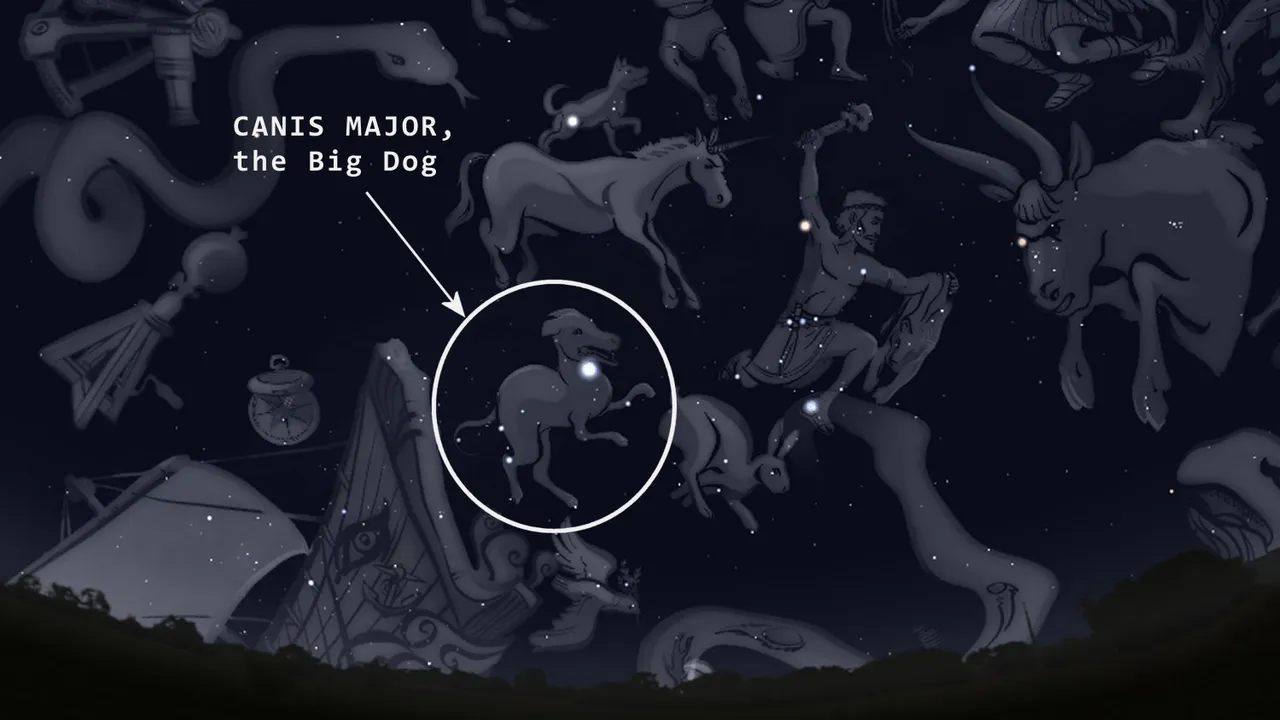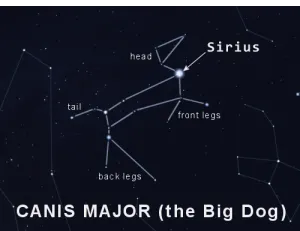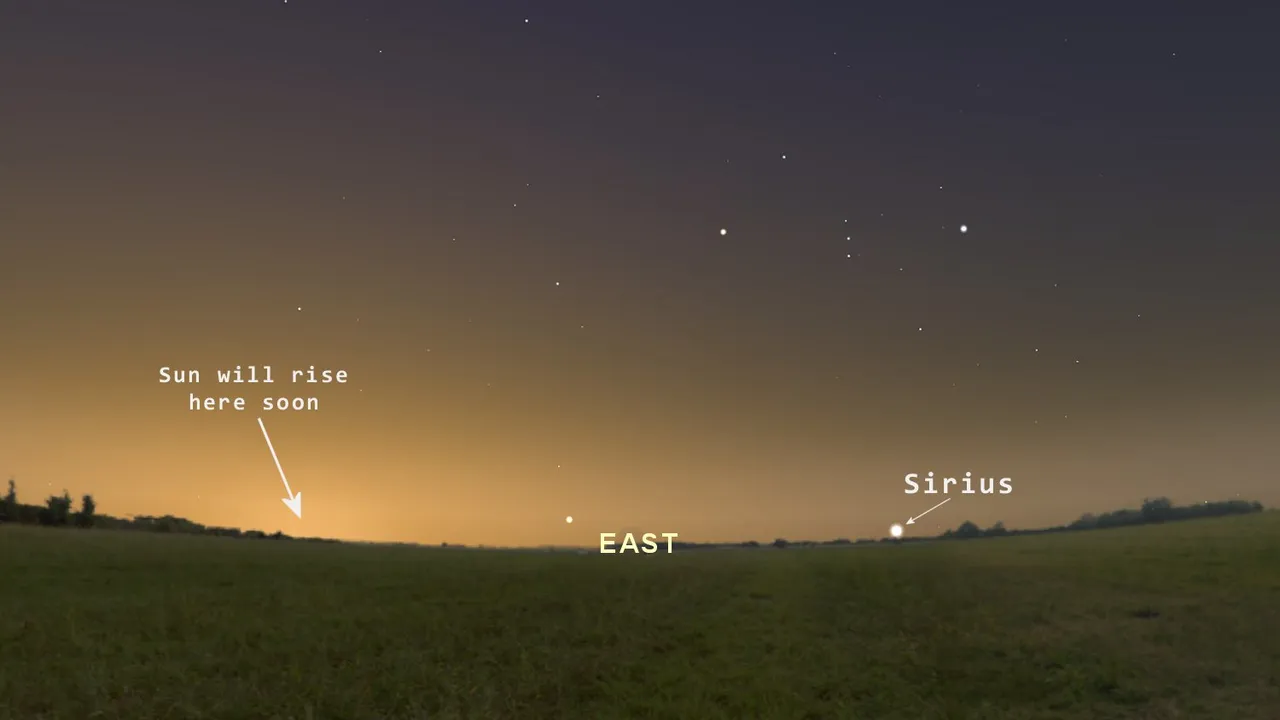
• SCREENSHOT FROM STELLARIUM •

The star Sirius (pronounced just like the English word "serious") is the brightest star in the night sky as seen from Earth. Technically, of course, our own Sun is also a star, so it is the brightest, but hey... of all the starts that are not our own Sun, Sirius is the brightest. 😁 Only the Sun, Moon, and four of the planets (Venus, Mars, Jupiter, & Mercury) are brighter. This gives Sirius some measure of importance.
The ancient Greek word for the Sun was Hλιος (Hēlios), and from that we get the word heliacal, which means: with, or near, the sun. When a celestial object can be briefly glimpsed right before the sun rises, it is said to be rising "with the sun" or in a heliacal manner. The ancient peoples noticed that the heliacal rising of Sirius happened about the same time as the hottest period of the year was beginning in the Northern Hemisphere. Thence, the name "Dog Days" after the "Dog Star," Sirius.

• SCREENSHOT FROM STELLARIUM, ENHANCED BY ME •
There is some discrepancy as to exactly when Dog Days begins. Although the heliacal rising of Sirius is a discrete physical event that happens with mathematical accuracy, it occurs at different times from different latitudes on Earth. Obstructed horizons can prevent the star's heliacal rising from being directly observed. Heliacal risings of Sirius occur every 365¼ days, which harmonizes nicely with the Julian calendar but not the modern-day Gregorian calendar. Lastly, some people who don't understand the origin of the term "Dog Days" seem to want to fix the "official date" to certain calendar dates, regardless of when the heliacal rising of Sirius happens, and different people have a different opinion on when that "should" be.
But, now at least everyone who has read this knows the story behind the name, and can help spread the word. If nothing else, it is something interesting to discuss on a front porch with a glass of cold lemonade on a sultry summer evening.
 😊
😊SOURCES
1 Wikipedia: Dog Days
2 Wikipedia: Heliacal rising



Fun Under the Night Sky • Venus, Evening Star • Fire Hydrants
Round Bottom Bottles • Micrometers and Precision Measuring
Climbing a Mountain with Trigonometry • I Wish You Cheer
Dynamics of Autumn • How Rocks Get Their Color

a big hug is due to @enginewitty for designing the following personal banner for me 🤗




